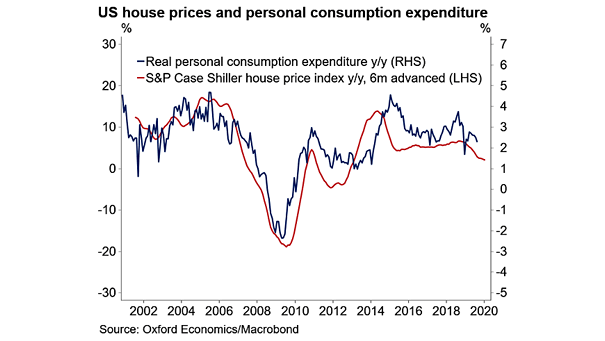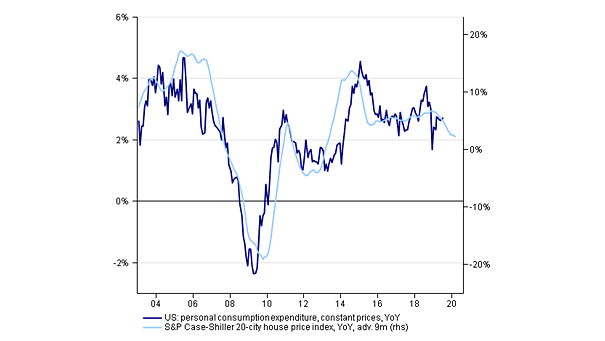U.S. House Prices Lead Real Personal Consumption Expenditure (PCE)
U.S. House Prices Lead Real Personal Consumption Expenditure (PCE) Interesting chart suggesting that U.S. house prices lead real personal consumption expenditure by 6 months. Image: Oxford Economics, Macrobond


